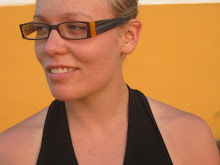Lagos, a city bursting at the seams with humanity. In November my partner and collaborator John MacLean and I arrive for the 11th edition of Trufesta International Dance Festival. We arrived at night. Flights into Murtala Muhammed International Airport always arrive at night, to a sea of eyes waiting for passengers arriving from the outside world. Firelights from the ground are visible as the airplane circles to descend. Noticeably absent is the usual electric glow keeping back the total darkness of the urban night. The realness of Lagos begins to sink in as the humidity rises to overpower inadequate air conditioning motors. A woman warns her laughing children “…remember, when we get to the ground I can beat you!”
It’s been two years since I was last in Lagos and this time, as we hump our bags out of the car onto the compacted earth of the artists’ village, the sprawling greeting we get from old friends is overwhelming, the best I’ve ever had. Five years ago, before my first trip, many people told me that West Africa has a way of stealing you or leaving you. They predicted I would return to North America wondering how soon I could get back to Nigeria, or I would never want to go back at all. I will always go back.
Each time that I create a new work I am investigating my language of the body. My movement life has been informed by many styles and the language that I work with is unique to my instincts about dance. Each time that a piece is born I have expanded my vocabulary and have the opportunity to see my physical language and intimate thoughts recited back to me.
Lagos and my relationships there inform the work that I am creating for students at the School of Toronto Dance Theatre.
Dance at day’s end: dozens of bodies moving in eddies and inter-reacting, fugueing and swirling like schools of fish we dance in a large earth courtyard by following, leading, absorbing, reflecting one another in pairs and lines. The corners of my mouth pull further and further up with pleasure and even some awe at the volume of incredible and original combinations of dance, language, comedy and personality exploding around me. It’s a dance jam like no other, young bodies, old ones, everyone’s involved. The mats in the yard are just a token, far too small to contain the kind of exuberance that everyone is bringing to this night. I follow spontaneous currents and splinter with other dancers into the trees and bushes, across roots and across the top of generator boxes. Even as it passes time is of no relevance in this state. Hours later I am instructed by one of my African ladies to stop dancing and EAT. A long lasting, alcohol-free scene the likes of which I’ve never witnesses before, it inspires and reminds me just how much distance I’ve put between where I am and where I come from .
Back in Toronto now I use what I call Non-Stop as way of conveying a similar radical energy in rehearsals and training. In the case of the TDT second year students, rhythm is integral, once they are introduced to it and can lock in they are visibly freed up in their movements. We then create short duets and solos to highlight the playful aspects of human communication. There is power in joy for joy’s sake and it’s my goal to show the students a different way of relating to movement to dig into the power of pulse and the freedom that joyousness can bring. This offers a taste of one element on a long list of qualities that draw me to Nigeria over and over again.
Creating work for 18 young, talented dancers has been a great inspiration and helped fuel me through the winter. It’s been my way of returning for an afternoon to the heat of Lagos city where the dancing continues regardless of who has wrestled their way into political control.

